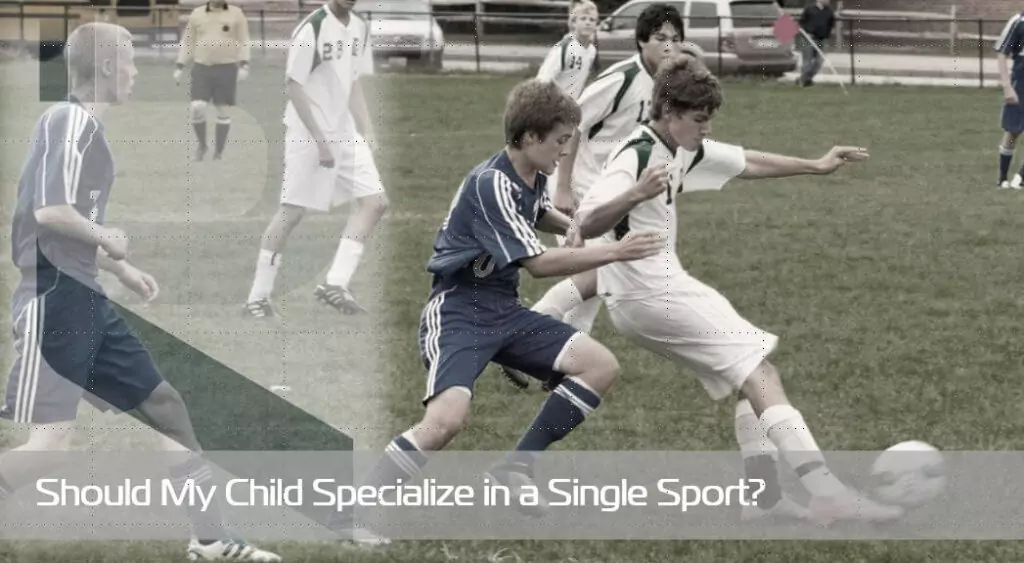Sports participation has the benefits of physical activity, developing physical skills, socialization, learning teamwork, self-regulation ability, leadership skills, self-esteem, building memories, and having fun. Beyond participation is sports specialization, which is year-round participation of intensive training of a single sport in exclusion of other sports. There has been an increase in specialization for athletes under the age of 18 years old, for reasons such as the hope of a college scholarship, aspirations at the collegiate and professional level, or thoughts that 10,000 hours create mastery. Sports that young athletes tend to specialize in include tennis, gymnastics, dance, soccer, and baseball. There are a few sports, including gymnastics, that require early specialization and have earlier peak performance and shorter duration of participation. There are concerns about negative aspects of early sports specialization, including burnout, psychosocial issues, overuse injury, and other health concerns.
Overuse injury has been correlated with high training volume and intensity. Repetition of the same activity can lead to microtrauma (small amounts of tissue damage that over time lead to injury). Specifically, sports specialization has been linked to anterior knee pain in females by an increase of 1.5 to 4 times. Another study of tennis players reported knee injuries to be the most common injury, and higher occurrences of severe injuries including stress fractures of the spine or extremities, overuse elbow ligament (UCL) injury, and Osteochondritis Dissecans (a condition in which a small segment of the bone separates from the surrounding region due to lack of blood supply). Individual sports specialization has an even greater overuse injury rate than team sports specialization. Team sports have a higher rate of acute injury, especially football, and cheerleading. Athletes that participate in single sports greater than eight months during a given year, or more hours than their age per week, have a higher rate of overuse injuries. Studies of high school athletes show the ankle and knee to be the most commonly injured, with ligament damage the most frequently affected. A survey of youth soccer players showed the knee to be more commonly injured with a 2.5-time injury rate if playing on more than one team. Players who participated in more than one sport have a 60% decreased risk of injury. Multi-sports participation is correlated with a reduced overuse injury and all injuries in general.
Other health concerns due to single-sport specialization include increased nutritional needs due to the intensive training, which, if not attended to, can lead to lower iron and calcium, lower body fat, inadequate caloric intake, and delayed menorrhea. Low energy status occurs with an imbalance between caloric intake and energy expenditure, resulting in serious consequences for Female Athlete Triad (low energy availability, menstrual dysfunction, and low bone mineral density). Bone density develops as we grow, and inadequate nutrition can have long-term effects of low bone density and osteopenia or osteoporosis, which can permanent. The incidence of bone stress injury – stress reactions and stress fractures – increases significantly in the undernourished young female athlete.
Multi-sport athletes are 2.5 times more likely to have good mechanics and body control with movement such as jumps than single-sport athletes, which can decrease injury. They are also more likely to continue the sport.
Fear of failure is related to burnout and psychological stress (anxiety, depression, social isolation) in athletes. Children do not want to let their parents down. It’s known that 50% of parents encourage their kids to specialize in a single sport, half of which hope their child will play collegiate and professional. The statistics on this reality are sobering. Only 3.3% to 6.8% of high school athletes will play collegiately (basketball, football, baseball, and soccer). And even lower is 0.03% to 0.5% will play professionally. The majority of Division I collegiate athletes were not single-sport specialized throughout high school. Research of NBA players shows that multi-sport athletes played a more significant percentage of games, had lower rates of severe injury, and had longer careers. NFL Combine athletes are overwhelmingly multisport, with statistics in 2015 showing 87% were multi-sport athletes in high school and 13% only played football. The NBA Youth Basketball Guidelines limit the number of hours of practice and games based on age, limit the number of months per year of participation, and delay specialization until age 14 or older. The American Academy of Pediatrics guidelines include delaying specialization until late adolescence, early diversification, three months off per year in increments of 1 month, and one to two days per week off for young athletes. For most sports, late specialization with multi-sport diversification is more likely to develop elite status.
Multi-sport athletes are 2.5 times more likely to have good mechanics and body control with movement such as jumps than single-sport athletes
Long-term athlete development (LTAD) programs started in the 1990s in the United States, Canada, and other industrial countries to counteract early specialization’s detrimental effects. The aim of the LTAD programs is to master movement skills and sport skills, including agility, balance, coordination, and speed. The US Olympic Committee uses the LTAD principles. These foundational skills mastered at a young age are necessary to specialize later.
In summary, multi-sport participation develops athletes who ultimately have healthier and longer sports participation and greater success in college and post-collegiate professional sports. Delaying sports specialization until late adolescence will decrease detrimental risks and increase the likelihood of athletic development.



